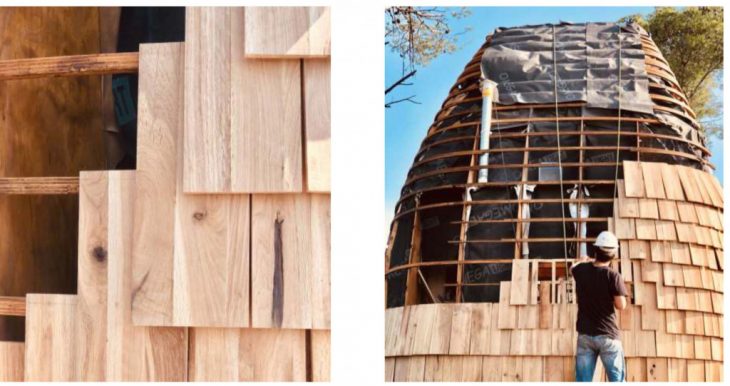When wood is used as a construction material, whether as a structural support in a building or in woodworking objects, it will absorb or release moisture until it is in equilibrium with its surroundings. Equilibration (usually drying) causes unequal shrinkage in the wood, and can cause damage to the wood if equilibration occurs too rapidly. The equilibration must be controlled to prevent damage to the wood.
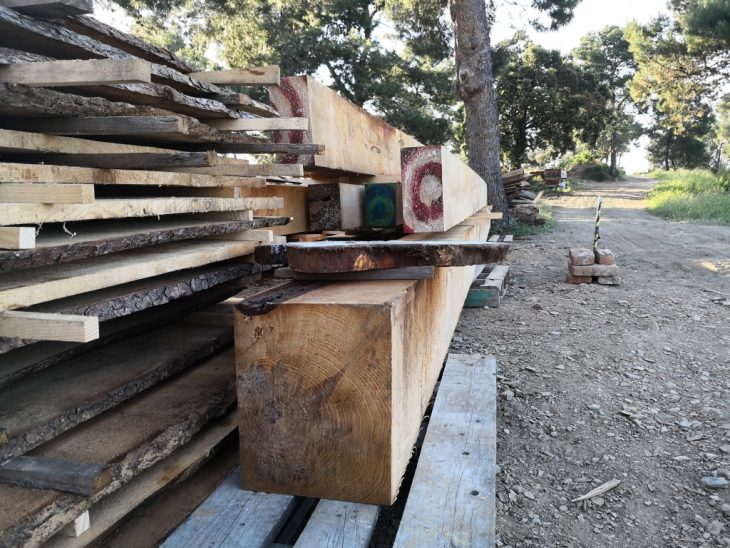
The MAEB team was invested in using freshly harvested oak from the Colserolla Park for the prototype house envelope. Accordingly MAEB was challenged to find solutions for warping of the wood which occurred after processing the lumber to produce shinThe envelope shingles were produced to fit 4 different dimension groups. These groups were designed to optimize the number of shingles that could be produced to cover the prototype house from the existing lumber harvest, as well as match the particular dimensions of the existing lumber as well as the morphology and proportions of the house:
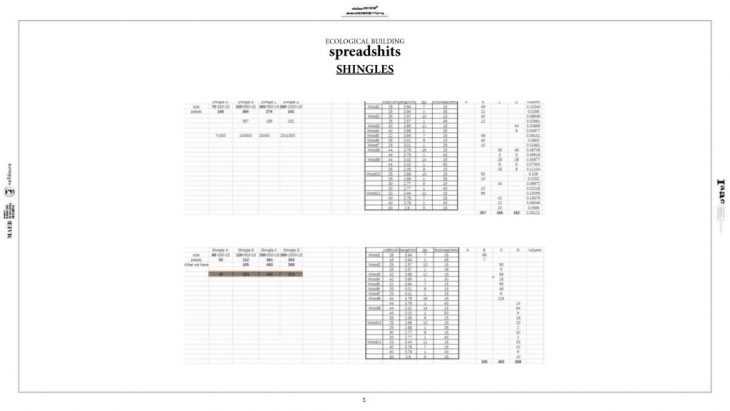
Soon after processing, the fresh wood shingles warped rapidly and the morphology curved to such an extent that the resulting pieces were no longer applicable to be used in the envelope system.
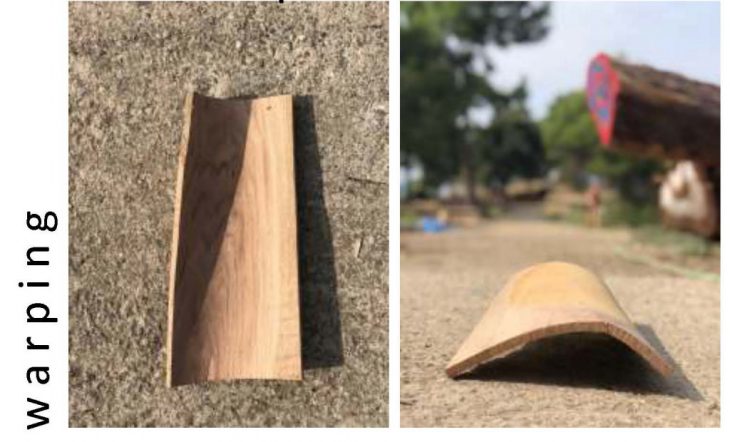
In order to find ways to control the amount of warping that natural occurred through moisture release, the MAEB team ran 4 material tests to evaluate the level of control each system had on reducing warping:
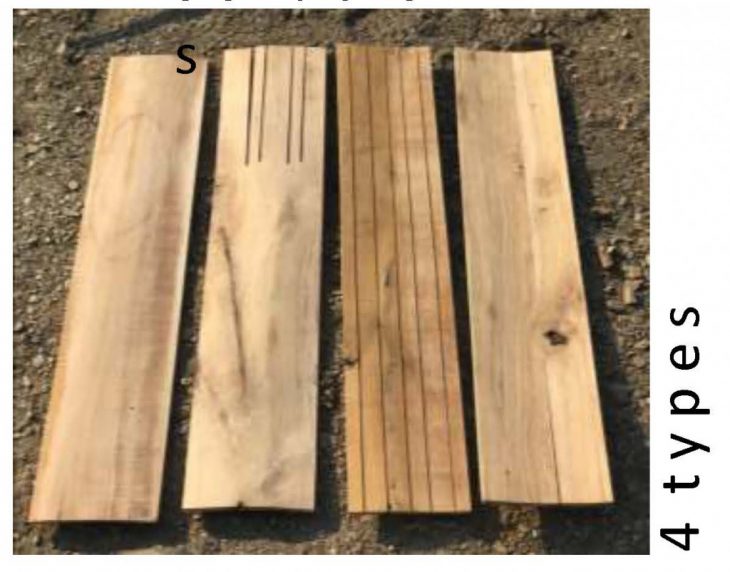
The two most successful outcomes followed two strategies: 1. A technique of scoring the wood on the underside of the shingle and 2. A technique of slicing the timber and flipping direction of the pieces related to each other (much like a positive and negative charge in a battery) so that the pieces would exert equal but opposite forces onto each other and ultimately cancel out the overall formal change of the pieces. Both of these techniques were applied in the construction of the prototype house, and the study can be revisited later in order to further assess and evaluate which strategy in fact proved to be a better solution to reduce fresh timber warping.
